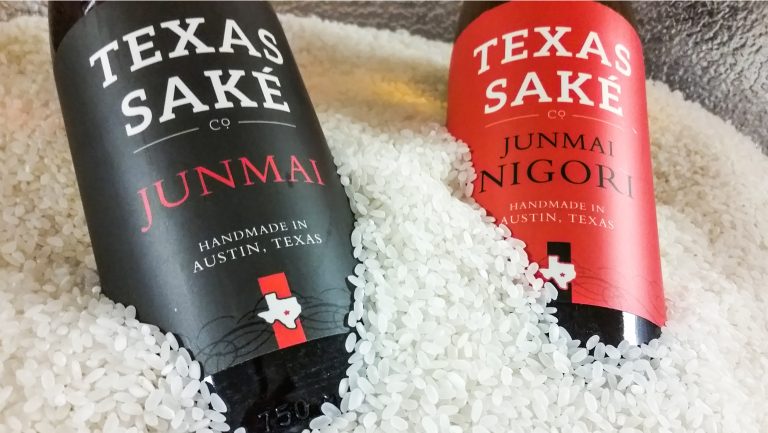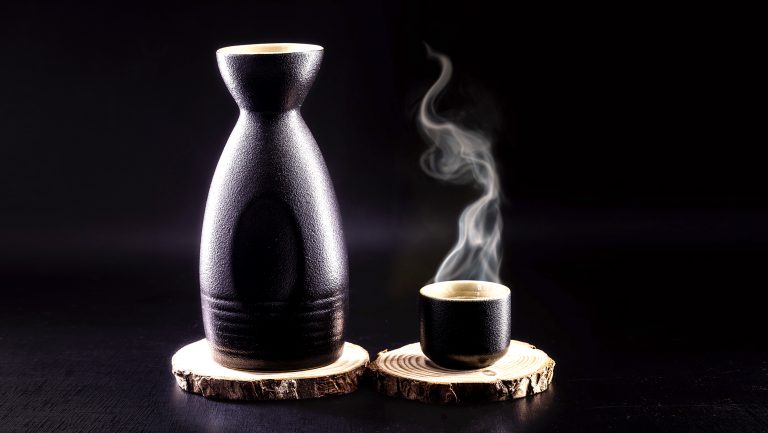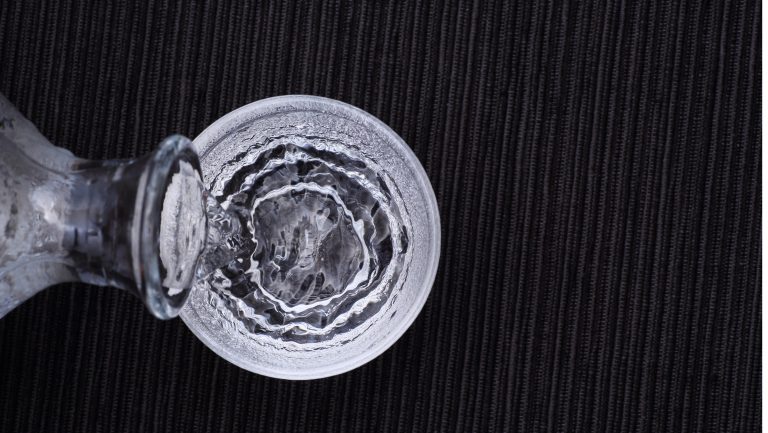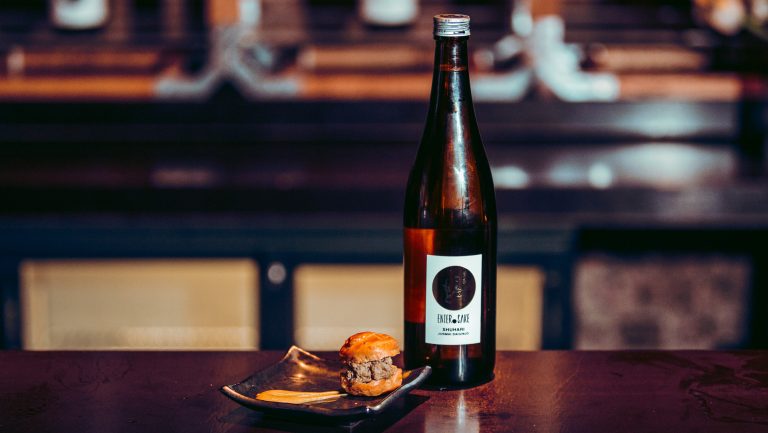Trevor Wight is the marketing and sales manager at Texas Sake Company, and his email signature—which is Kanpai, y’all!—gives a good indication of where sake is headed stateside. At Texas Sake Company, the beverage has Japanese origins but a distinctly American profile. “We’re run by Americans,” Wight says, “we use American ingredients, and [we’re] definitely paying homage to American traditions—but with a beverage that’s not uniquely American.”
The Austin-based operation is part of a small, new wave of American craft sake producers in the U.S. that’s spread from New York and Maine to Colorado and the Lone Star State. Relying on marketing efforts, insight from the craft beer segment, and a commitment to quality ingredients, these small producers are intent on making American craft sake a viable, full-fledged segment.
And there’s evidence that the stars are starting to align for the new category. As sake consumption in the U.S. steadily grows, so do the prospects for American craft sake producers. Between 2011 and 2016, according to the market research firm Euromonitor International, overall sake volume in the U.S. grew by about 16 percent, to 25 million liters (about 2.8 million cases). And though that’s relatively modest compared with Euromonitor’s tally for total sake volume in Japan—which amounts to about 525 million liters (58 million cases)—that volume has been declining steadily. (It fell about 11 percent during the same period.)

Don’t miss the latest drinks industry news and insights. Sign up for our award-winning newsletters and get insider intel, resources, and trends delivered to your inbox every week.
Most of the U.S. volume is accounted for by Japanese brands (including Japanese sake brewers, like Gekkeikan, that have U.S.-based production operations), and the number of American craft sake producers is still small—fewer than 20, by most counts—so they’re barely making a dent in the country’s overall sake consumption. But a number of factors, beyond the rising consumption figures, are creating a hospitable environment for up-and-coming American sake brewers.
Making Its Way to the Mainstream
Sushi bars and izakayas are low-hanging fruit for sake brands. Yet it’s difficult for an upstart American sake producer to build a business that relies solely on Asian-cuisine-oriented venues. Another hurdle is to get products onto the menus at restaurants that already have a reliable stable of favored brands. One way producers are meeting these challenges is by convincing prospective accounts that sake is just as appropriate a companion for non-Asian fare as it is for the Japanese cuisine with which it’s most closely associated.
The Boston-based sake writer, educator, and consultant Richard Auffrey has observed some movement in that direction in his own backyard, particularly from New England brewers like Blue Current Brewery in Kittery, Maine, and Dovetail Sake based in Waltham, Massachusetts. “Blue Current is in dozens of restaurants in the Maine area,” says Auffrey, “mostly in non-Asian restaurants—which is one of the biggest obstacles to making sake more popular, to be able to [persuade people] to have it with pizza, burgers, French food, Italian food, or whatever. Dovetail is doing the same thing.”
Dan Ford, the founder of Blue Current, is a former financial tech professional who started his brewery in an old auto repair garage in 2015. He explains that Blue Current’s success beyond in-the-know accounts and consumers depends on his being able to convince drinkers and retailers that the beverage—his ginjo-grade sake, in particular—has broad appeal. For example, he pushes sake as a great alternative for Pinot Grigio drinkers who are looking to switch things up with “something that’s healthful … and rice-based.” (He also points out that rice “makes one of the cleanest fermented alcohols,” which he suggests will appeal to consumers seeking to avoid sulfites.) “As soon as I say, ‘It’s like Pinot [Grigio],’” says Ford, “they say, ‘Oh, let me try that.’”
But white-wine drinkers are far from the only ones Ford sees gravitating toward sake. He explains that sake is also a big hit at craft beer festivals. “We go to beer festivals,” he says, “and we stand alongside the likes of Shipyard [Brewing]—everyone’s pouring really great stuff—and people are willing to come up and try our sake. They definitely support it in a craft beer fashion, in that they’re looking at it as a hip, cool drink—it’s the coolest thing they’ve never tried.”
American Sake’s Craft Beer Roots
Texas Sake Company opened in 2011, but it didn’t really start to hit its stride until after it was purchased, in 2014, by Adam Blumenshein and Tim Klatt, owners of Strange Land craft beer brewery in Austin, who revamped the business model based on insight from their Strange Land success and—along with their master sake brewer Jeff Bell—updated the product recipes.

Texas Sake isn’t the only American sake company spearheaded by people with craft beer roots. Dovetail Sake’s cofounder, Todd Bellomy, worked in craft brewing for eight years (and studied in Japanese sake breweries) before he and his partner, Daniel Krupp, launched Dovetail in 2014. Another sake producer with a beer pedigree is Setting Sun Sake Brewing Co. in San Diego; the brewery’s founders, Josh Hembree and Keldon Premuda, are veterans of Stone Brewing in nearby Escondido. (Hembree also worked for a number of other international beer producers.)
“I’ve developed a solid foundation of brewing science in my 10 years in the beer industry,” says Hembree. “Brewing beer is not just putting sugar water together with yeast. You’ve got to understand the metabolic lifestyles of yeast. And that sets a nice foundation that you can apply to sake.”
In addition to that foundational knowledge, the brewers at Setting Sun have made a few other stylistic choices based on knowledge acquired in the craft beer world. They’ve given some of Setting Sun’s sakes beerlike twists by adding hops, aging the sake in spirit and wine barrels, and performing a mixed-culture fermentation to produce a sour variety.
A Shift toward Quality Ingredients and Processes
Traditionally, sake is made from rice varieties in the japonica rice family, which promise a good-quality product. Before Texas Sake Company’s current owners bought the business, the brewery was making sake with a variety of Texas brown rice. “It didn’t make a good product,” explains Wight. “It was overly dry and soured quickly.” After purchasing the brewery, the new management team changed the recipe and started sourcing a rice variety called Calrose from California; it’s a much closer relation, Wight says, to the japonica varieties grown in Japan.
The Calrose variety has become the go-to base for many U.S. sake producers, including Setting Sun. “It’s a shorter-grain, starchy rice that functions the same way [as japonica],” explains Hembree. “It’s not one of the identified sake varieties [in Japan], but it’s one-to-one analogous in my mind.”
Also, a version of yamada nishiki—the most popular sake-making rice variety in Japan—is being grown in Arkansas, and some American brewers have been incorporating it in their products.
In addition to a growing access to better rice varieties, American craft sake producers are creating innovative ways to get the rice polished to the right ratio—particularly important if a brewer wants to make ginjo (which leaves 51 to 60 percent of the grain remaining) or daiginjo (in which 50 percent or less remains). Rice-polishing machines are fairly pricey for individual brewers, but Blake Richardson, the owner of the Moto-i sake brewery and restaurant in Minneapolis, launched a sister company, Minnesota Rice & Milling, which provides rice-milling services (as well as rice) to sake breweries and suppliers.
Auffrey predicts that the enhanced focus on production and quality of raw materials is paving the way for further expansion of American sake brewing in the U.S. Predictions from Euromonitor support the prospect for growth in the segment as well. It projects overall consumption of the beverage in the U.S. to increase another 12 percent by 2021.
“It’s a learning process for brewers,” Auffrey says. “It takes time to get used to doing this, and the longer they do it, the [more the] quality is going to [improve].” He adds that sake tasting events are also helping to get consumers on board with the category. And pointing to the diversity of American sakes, Auffrey says, “[Consumers are] so surprised at what they find.”

Dispatch
Sign up for our award-winning newsletter
Don’t miss the latest drinks industry news and insights—delivered to your inbox every week.
Jeff Cioletti is a former editor in chief of Beverage World magazine and the author of the books The Drinkable Globe, The Year of Drinking Adventurously, Beer FAQ, and the upcoming Sakepedia. He’s a Certified International Kikisake-shi (sake sommelier).






